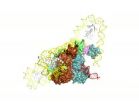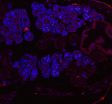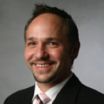(Press-News.org) VIDEO:
The new rendering of the protein-DNA complex, or machine, that the Lambda virus uses to insert its DNA into that of its E. coli host.
Click here for more information.
For half a century biologists have studied the way that the lambda virus parks DNA in the chromosome of a host E. coli bacterium and later extracts it as a model reaction of genetic recombination. But for all that time, they could never produce an overall depiction of the protein-DNA machines that carry out the work. In a pair of back-to-back papers in the Proceedings of the National Academy of Sciences, scientists produce those long-sought renderings and describe how they figured out how they should look.
For people already in the know, here's the advance in a sentence: The team of researchers at Brown University and the University of Pennsylvania mapped the specific ways that the recombination proteins in the machines bridge separate sites along the DNA of the host and the virus. But for everyone else, to understand what that means is to appreciate the evolved "ingenuity" of the lambda virus that has made it the subject of 50 years of intriguing study. Thankfully Lambda is benign, although it has medically nasty cousins that work much the same way.
Lambda, said co-corresponding author and Brown emeritus biology Professor Arthur Landy, is not one of those devil-may-care viruses that just smashes and grabs a host cell for immediate reproduction. Instead it senses the physiology of its E. coli host and waits for the cell to be healthy before striking, perhaps several generations of cell division later. To execute this more refined strategy it assembles a n ensemble of proteins, or a " machine" to insert its DNA in a precise location in the DNA of the host (to ensure that its DNA will persist for many generations of host cells), and another machine to extract the DNA when the chosen moment of ideal host health arrives.
"The viruses make a 'decision' when they infect a cell as to whether or not this is a good time to lyse the cell and make more virus or whether it would be more propitious to integrate their chromosome into the E. coli chromosome, turn off their genes and sit there for generations," Landy said. "Then when things look good again they use a different but related pathway to excise their chromosome, in order to make more virus and kill the cell."
The way Lambda senses the health status of the host is built right into the machines. The machines incorporate key DNA-bending proteins that are made by E. coli to regulate expression of its own genes. Therefore the levels of these proteins also reflect the physiological state of the cell, Landy said. While some recombination proteins bind to just one site in each DNA, Lambda and its ilk go through the trouble of latching on to two distant sites in the DNA. The reason is to make the whole reaction depend on the presence of these key DNA-bending proteins to bend the sites into closer proximity. Without those proteins, the machines can't work.
""It makes the system gratuitously dependent on the proteins of the cell which serve as reporters of how well the cell is doing and where it is in its life cycle," Landy said. "This makes it exquisitely sensitive to the physiology of the cell."
Mapping Bridges
Biologists already knew all this, but they had never quite figured out how the recombination proteins in the machines bridge the two DNA sites,(i.e.,which sites were bound or bridged by the same recombination protein). Therefore they couldn't really figure out what the whole machines looked like. Direct imaging tools such as crystallography never worked on the whole machines because it has too many forms, Landy said, and nuclear magnetic resonance never worked because it was too hard to make enough of the machines in a high enough concentration.
So the team did a couple of other experiments to figure out the bridging. One used chemicals and the other used genetics, but in each case they were essentially tagging different pairs of locations on the proteins and the DNA to see if any of those pairs, upon being connected, would produce a tell-tale effect: in the case of the chemistry the tell-tale was a change in the structural properties of the complex; in the case of the genetics it was a successful integration or excision reaction
It's a bit like trying to wire a battery into a light bulb circuit where there are many pairs of loose wires, but only two that actually connect to the bulb. When one finally connects (or "bridges") the right two loose wires with the battery's electrodes, the light bulb lights and then one has mapped where those correct two wires are.
They combined their new mappings, including distance measurements within the protein-DNA complexes using fluorescent tags, with all of the other biochemical and structural information biologists have learned over the last 50 years, into a computer model to render the overall depictions of the machines.
They confirmed in further research that the models they generated explained and agreed with much of the observed behavior of the machines.
So now, long after they began to understand how worthwhile the Lambda virus was to study, researchers can finally see what these model DNA insertion and removal machines look like. That information will serve to make Lambda an even more powerful model for research and teaching, Landy said.
INFORMATION:
The lead authors of the paper that focused on mapping the bridging are Wenjun Tong and David Warren. Other Brown authors, in addition to Landy are Nicole Seah and Gurunathan Laxmikanthan. The co-corresponding author at Penn is Gregory Van Duyne.
Seah is the lead author of the paper the resolves the overall architecture of the machines. Warren, Tong, and Laxmikanthan are co-authors and Van Duyne is again a co-corresponding author.
The National Institutes of Health supported the research (grants: GM062723, GM033928, and GM108751).
Elusive viral 'machine' architecture finally rendered
2014-08-11
ELSE PRESS RELEASES FROM THIS DATE:
Native bacteria block Wolbachia from being passed to mosquito progeny
2014-08-11
Native bacteria living inside mosquitoes prevent the insects from passing Wolbachia bacteria -- which can make the mosquitoes resistant to the malaria parasite -- to their offspring, according to a team of researchers.
The team found that Asaia, a type of bacteria that occurs naturally in Anopheles mosquitoes, blocks invasion of Wolbachia into the mosquitoes' germlines -- the cells that are passed on through successive generations of an organism -- thus stopping the insects from transmitting Wolbachia to their offspring.
"Wolbachia infects up to 70 percent of all known ...
Novel drug action against solid tumors explained
2014-08-11
(SACRAMENTO, Calif.) — Researchers at UC Davis, City of Hope, Taipai Medical University and National Health Research Institutes in Taiwan have discovered how a drug that deprives the cells of a key amino acid specifically kills cancer cells.
Their paper, published today in Proceedings of the Academy of Sciences, is the culmination of nearly a decade of research into the role of arginine – and its deprivation – in the generation of excessive autophagy, a process in which the cell dies by eating itself.
Study co-author Hsing-Jien Kung, a renowned cancer biologist and ...
Reconstructions show how some of the earliest animals lived -- and died
2014-08-11
VIDEO:
This is an animation of the growth and development of the extinct rangeomorph species Beothukis mistakenis, which lived during the Ediacaran Period from approximately 575 to 555 million years ago....
Click here for more information.
A bizarre group of uniquely shaped organisms known as rangeomorphs may have been some of the earliest animals to appear on Earth, uniquely suited to ocean conditions 575 million years ago. A new model devised by researchers at the University ...
A vaccine alternative protects mice against malaria
2014-08-11
A study led by Johns Hopkins Bloomberg School of Public Health researchers found that injecting a vaccine-like compound into mice was effective in protecting them from malaria. The findings suggest a potential new path toward the elusive goal of malaria immunization.
Mice, injected with a virus genetically altered to help the rodents create an antibody designed to fight the malaria parasite, produced high levels of the anti-malaria antibody. The approach, known as Vector immunoprophylaxis, or VIP, has shown promise in HIV studies but has never been tested with malaria, ...
Search for biomarkers aimed at improving treatment of painful bladder condition
2014-08-11
Winston-Salem, N.C. – August 11, 2014 – Taking advantage of technology that can analyze tissue samples and measure the activity of thousands of genes at once, scientists at Wake Forest Baptist Medical Center are on a mission to better understand and treat interstitial cystitis (IC), a painful and difficult-to-diagnose bladder condition.
"We are looking for molecular biomarkers for IC, which basically means we are comparing bladder biopsy tissue from patients with suspected interstitial cystitis to patients without the disease. The goal is to identify factors that will ...
Highly drug resistant, virulent strain of Pseudomonas aeruginosa arises in Ohio
2014-08-11
A team of clinician researchers has discovered a highly virulent, multidrug resistant form of the pathogen, Pseudomonas aeruginosa, in patient samples in Ohio. Their investigation suggests that the particular genetic element involved, which is still rare in the United States, has been spreading heretofore unnoticed, and that surveillance is urgently needed. The research is published ahead of print in Antimicrobial Agents and Chemotherapy.
The P. aeruginosa contained a gene for a drug resistant enzyme called a metallo beta-lactamase. Beta-lactamases enable broad-spectrum ...
Want to kill creativity of women in teams? Fire up the competition
2014-08-11
Recent research has suggested that women play better with others in small working groups, and that adding women to a group is a surefire way to boost team collaboration and creativity.
But a new study from Washington University in St. Louis finds that this is only true when women work on teams that aren't competing against each other. Force teams to go head to head and the benefits of a female approach evaporate.
"Intergroup competition is a double-edged sword that ultimately provides an advantage to groups and units composed predominantly or exclusively of men, while ...
New study: Ravens rule Idaho's artificial roosts
2014-08-11
A new study by the Wildlife Conservation Society (WCS), U.S. Geological Survey (USGS) and Idaho State University (ISU) explored how habitat alterations, including the addition of energy transmission towers, affect avian predators nesting in sagebrush landscapes.
Researchers compared nesting habitat selection between Common Ravens and three raptor species commonly found in sagebrush ecosystems: Red-tailed Hawks, Swainson's Hawks, and Ferruginous Hawks.
Using the data from their field research and reviewing historical data from other studies, the scientists developed ...
Can fiction stories make us more empathetic?
2014-08-11
Empathy is important for navigating complex social situations, and is considered a highly desirable trait. Raymond Mar, a psychologist at York University in Canada, discussed how exposure to narrative fiction may improve our ability to understand what other people are thinking or feeling in his session at the American Psychological Association's 122nd Annual Convention.
Exposure to stories
Many stories are about people--their mental states, their relationships—even stories with inanimate objects, may have human-like characteristics. Mar explains that we understand stories ...
Julio embarking on weakening trend
2014-08-11
The Central Pacific Hurricane Center has issued its 30th warning on Julio today at 1500 GMT. Julio's position at this point is 395 miles northeast of Honolulu, Hawaii moving northwest at 8 knots per hour. Julio is moving toward the northwest near 9 mph, 15 km/h. Maximum sustained winds are near 75 mph, 120 km/h, with higher gusts. Julio is expected to weaken slightly over the next 48 hours, down to tropical storm strength by tonight.
At present, hurricane force winds extend outward up to 25 miles, 35 km, from the center, and tropical storm force winds extend outward ...






